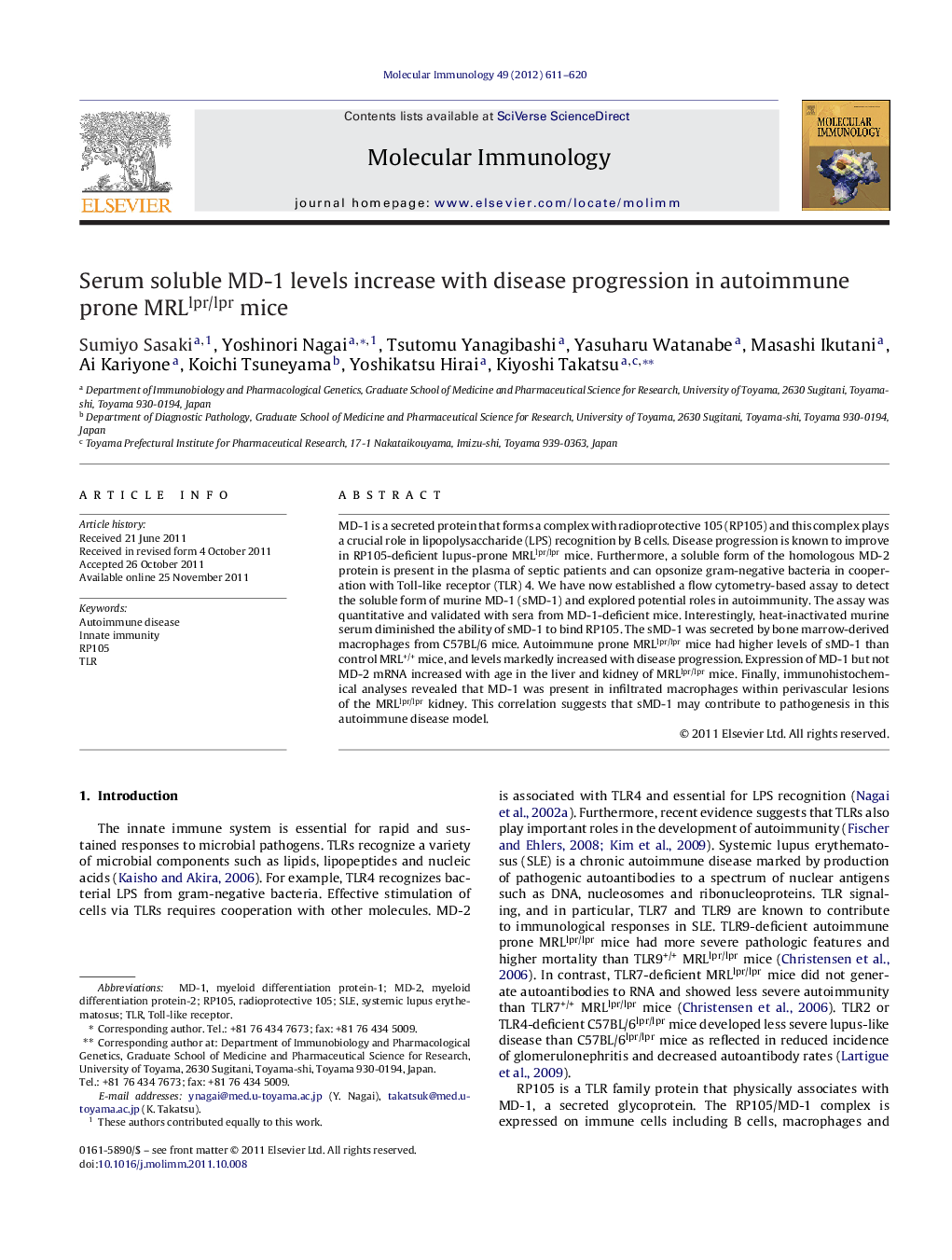| کد مقاله | کد نشریه | سال انتشار | مقاله انگلیسی | نسخه تمام متن |
|---|---|---|---|---|
| 5917407 | 1163788 | 2012 | 10 صفحه PDF | دانلود رایگان |

MD-1 is a secreted protein that forms a complex with radioprotective 105 (RP105) and this complex plays a crucial role in lipopolysaccharide (LPS) recognition by B cells. Disease progression is known to improve in RP105-deficient lupus-prone MRLlpr/lpr mice. Furthermore, a soluble form of the homologous MD-2 protein is present in the plasma of septic patients and can opsonize gram-negative bacteria in cooperation with Toll-like receptor (TLR) 4. We have now established a flow cytometry-based assay to detect the soluble form of murine MD-1 (sMD-1) and explored potential roles in autoimmunity. The assay was quantitative and validated with sera from MD-1-deficient mice. Interestingly, heat-inactivated murine serum diminished the ability of sMD-1 to bind RP105. The sMD-1 was secreted by bone marrow-derived macrophages from C57BL/6 mice. Autoimmune prone MRLlpr/lpr mice had higher levels of sMD-1 than control MRL+/+ mice, and levels markedly increased with disease progression. Expression of MD-1 but not MD-2 mRNA increased with age in the liver and kidney of MRLlpr/lpr mice. Finally, immunohistochemical analyses revealed that MD-1 was present in infiltrated macrophages within perivascular lesions of the MRLlpr/lpr kidney. This correlation suggests that sMD-1 may contribute to pathogenesis in this autoimmune disease model.
► A flow cytometry-based assay for the soluble form of MD-1 (sMD-1) was established and validated.
► sMD-1 is present in sera of normal C57BL/6 mice.
► Serum levels of sMD-1 increase with disease progression in MRLlpr/lpr mice.
► MD-1 mRNA levels in the liver and kidney of MRLlpr/lpr mice increase with age.
► Transcripts of the related MD-2 co-receptor do not change with age.
Journal: Molecular Immunology - Volume 49, Issue 4, January 2012, Pages 611–620